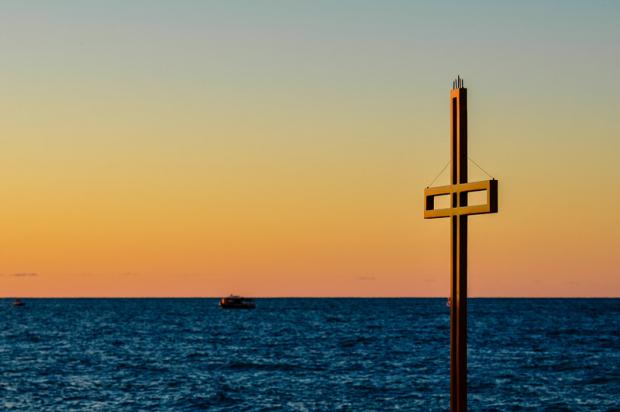Dr. David G. Anderson was a medical missionary of the China Inland Mission. He preached and treated patients in Shanxi and other places. During wars, he sacrificed his young life to treat patients.
On August 29, 1908, David G. Anderson was born in a British missionary family in Taizhou, Zhejiang Province. Both of his parents were medical missionaries in China. Anderson became a Christian at an early age under the guidance of his parents. When he joined the China Inland Mission, he studied at Zhizhi School in Yantai, Shandong. After graduation he returned to the UK to attend university. In 1927, at the Keswick Convention, he was inspired by the Holy Spirit and decided to dedicate his whole body and life to the Lord.
In 1933, Dr. Anderson and his fiancée Miss Marjorie E. L. Kerr were at a convention where they felt were called by the Lord to go to China. After joining the China Inland Mission, they left England in early 1934, arriving in Shanghai in mid-March. After studying Chinese in Shanghai, Dr. Anderson was sent by the church to work at Wilmay Memorial Hospital, Changzhi, Shanxi Province. Kerr was sent to work in Xiangyuan, north of Changzhi. On March 26, 1935, the first anniversary of their arrival in China, they were married in Tianjin. After their marriage, they both engaged in medical missionary work at Changzhi Wilmay Memorial Hospital.
At that time, there were ten missionary staff and 20 local colleagues employed at the Wilmay Memorial Hospital. There seemed to be many staff members, but its mission area was very wide, serving a total of two million people in seven counties and nearby remote places. Soon after Dr. Anderson came to the hospital, he became the trusted assistant of Dr. Paul E. Adolph (Chief Physician). In 1935 Dr. Anderson was put in charge of the mobile hospital. He went to nearby towns to cure diseases and preach. Especially at large temple fairs, he and fellow workers Dr. Helen R. Neve (female medical missionary) and others brought mobile hospitals to the common people, holding worship services while treating diseases. Dr. Anderson and his fellow workers not only saved countless people's lives, but also saved millions of souls. At the end of September 1936, Dr. Paul E. Adolph returned to the United States for further study and Dr. Anderson became the dean of the hospital.
On July 7, 1937, the Anti-Japanese War broke out. In September, the Japanese invaded Shanxi and the Battle of Taiyuan began. Although the Chinese troops fought hard, they could not stop the Japanese advance. At that time, the Chinese troops had many casualties, and Wilmay Memorial Hospital took on the heavy responsibility of treating the wounded. Dr. Anderson and fellow workers treated the Eighth Route Army wounded night and day. When medicine and medical equipment were scarce, they used Christ's love to do their best to rescue them.
Miss Rose S. Rasey, a female nurse who went to the front-line battlefield hospital, recalled: "Every day the Lord gave me strength to deal with many problems, and sometimes I had to kneel on the ground to take care of them (wounded). I was almost unable to stand up. May the Lord give me enough grace to save more people." In the rescue process, in order to comfort the wounded, the hospital staff would share with them the Gospel.
At that time, Japan had not yet declared war on Britain, the United States and other countries. Wilmay Memorial Hospital was run by British missionaries; to avoid harassment from the Japanese aggressors the roof of the hospital was deliberately painted with the union jack, the British flag, and the Japanese airplanes did not dare to bomb the buildings. As a result, many wounded and needy persons came to the hospital for treatment and refuge. In 1938 the hospital was overcrowded and didn't have enough wards, so many patients had to be treated outdoors. In order to treat more patients, Dr. Anderson and his colleagues set up a new hospital in Lucheng, with Dr. Anderson in charge. According to hospital records, in addition to the 5,000 outpatients in the two hospitals, there were more than 500 inpatients and wounded. In the face of such a heavy workload, Dr. Anderson spared no effort to treat patients and saved many people.
On June 21, 1939, after performing an operation on a patient, Dr. Anderson became infected with the typhoid virus. His treatment was ineffective and he passed away, sacrificing his life at the age of 31. He left behind his young wife and two daughter, one four years old and the other under the age of one.
- Translated by Kevin Feng












